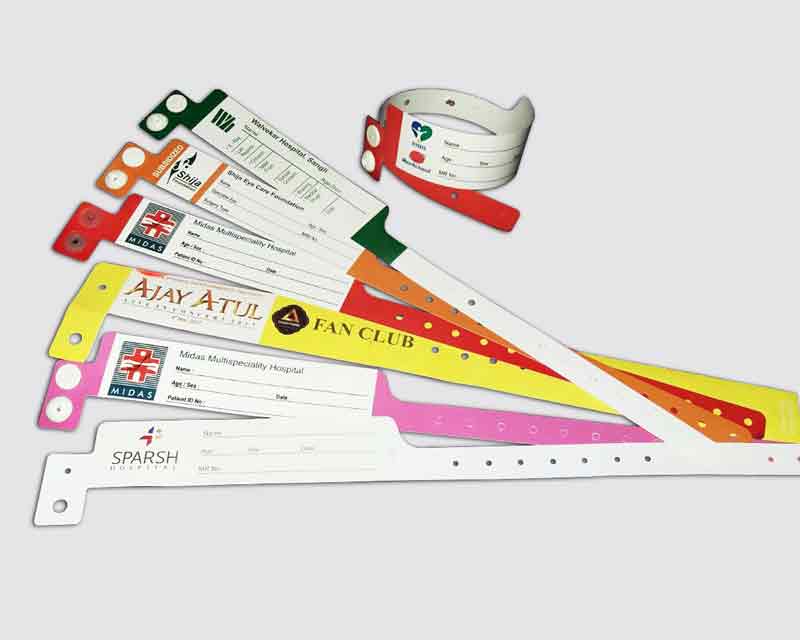The Development of the Patient Identification Band in Healthcare Facilities
The Development of the Patient Identification Band in Healthcare Facilities
Blog Article
Exactly How Patient Identification Band Plays a Vital Function in Patient Administration and Care
Patient Identification bands act as an essential gear in the detailed machinery of medical care systems, serving as a guard versus clinical mistakes. As the frontline device for verifying Patient identity, these bands underpin essential processes from providing the proper medicine to making sure the appropriate person undertakes the designated procedure. The profound influence of such a seemingly basic tool on Patient security, experience and outcomes could shock several, leaving one to ponder the prospective developments and technologies that can further improve their efficiency.

Comprehending the Essentials of Patient Identification Bands
Regardless of the simplicity of their look, Patient Identification bands serve an essential role in healthcare setups. These basic wristbands, usually constructed from plastic or paper, hold a wide range of information essential for Patient administration and treatment. They usually show the Patient's complete name, date of birth, and an one-of-a-kind Identification number, acting as the primary resource of Patient Identification. The bands might likewise present details such as allergies or unique treatment guidelines, providing healthcare experts with prompt access to essential details. The usage of these Identification bands is thought about an universal protocol in medical care, focused on ensuring Patient security and precision of treatment delivery. The efficiency of Patient Identification bands depends greatly on constant usage and exact info input.
The Function of Patient Identification Bands in Reducing Clinical Errors
A shocking number of clinical errors take place because of Patient misidentification, emphasizing the crucial role of Patient Identification bands. These straightforward, yet crucial, tools, help medical care service providers in appropriately identifying patients, hence lessening the likelihood of errors. These bands, typically furnished with barcodes or QR codes, consist of crucial Patient info such as name, age, and clinical history. This makes certain that the appropriate treatment is delivered to the ideal Patient at the correct time. In high-stress settings where clinical personnel manage countless responsibilities, Patient Identification bands work as a reliable and fast recommendation. Significantly, they supply a guard against misidentification, reducing the danger of wrong diagnoses, medicine errors, and unnecessary treatments, therefore playing a crucial function check out this site in reducing medical mistakes.
Enhancing Patient Safety With Identification Bands

The Impact of Patient Identification Bands on Patient Experience
Almost all patients in healthcare settings experience the usage of this Identification bands throughout their treatment trip. These bands, generally worn around the wrist, have an extensive influence on the Patient experience. They serve as a consistent, noticeable pointer of the Patient's identification and clinical problems, assuring clients that they are identified and cared for.
Future Advancements and Innovations in Patient Identification Bands Technology
While current Patient Identification bands have actually verified reliable in enhancing care, the perspective of technological improvements guarantees even better renovations. Emerging innovations, such as radio-frequency Identification (RFID) and Quick Response (QR) codes, use a new level of accuracy and performance. RFID tags can provide real-time Patient area tracking, while QR codes can keep comprehensive Patient info accessible using mobile phone scanning. Furthermore, assimilation of man-made intelligence can enable automated Patient information analysis, forecasting possible wellness dangers and improving therapy plans. Biocompatible materials are additionally being explored to enhance Patient convenience. These developments not just bolster Patient safety yet additionally enhance health care procedures. Hence, future technologies in Patient Identification bands hold considerable potential in reinventing Patient care.
Final thought
Patient Identification bands are a crucial possession in medical care, making sure precise Patient Identification and reducing clinical errors. These tools enhance Patient safety and security, boost confidence in health care systems, and enhance Patient experiences and results. With the potential for future innovations in Identification band modern technology, their role in Patient management and care is established to become also more crucial, strengthening their importance in the shipment of reliable and safe medical care.
How Patient Identification Band Plays an Important Duty in Patient Management and Care
An astonishing number of medical errors see happen due to Patient misidentification, emphasizing the indispensable function of Patient Identification bands. patient identification band.Undoubtedly, the usage of Patient Identification bands considerably boosts Patient safety and security in medical care settings. Therefore, future advancements in Patient Identification bands hold substantial possibility in revolutionizing Patient care
Patient Identification bands are an important possession in medical care, making certain exact Patient Identification and lowering clinical mistakes.
Report this page